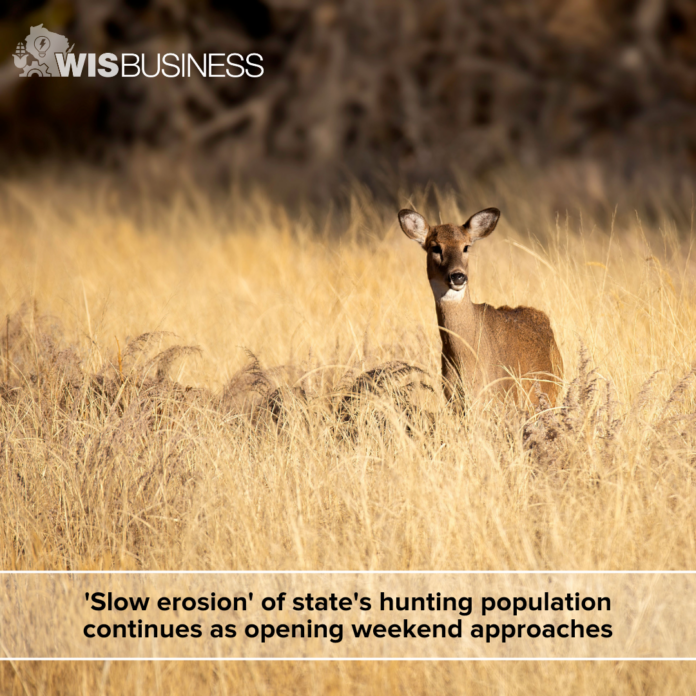The head of the DNR’s deer program says the “slow erosion” of Wisconsin’s hunting community continues this year due in large part to aging hunters.
Department of Natural Resources Deer Program Specialist Jeff Pritzl yesterday told WisconsinEye that hunting license purchases are down so far ahead of this year’s nine-day gun deer season, which begins Nov. 18.
“We’re going to probably lose about 2% a year,” he said, referring to the total number of participating hunters. “That’s been happening that way for a number of years, and it’ll probably continue for another decade.”
Earlier this month, Pritzl said hunters are likely to see a smaller deer harvest this year than in 2022, when favorable weather and other factors made for a successful hunt statewide. But rather than hunter activity being influenced much by predictions like these, he said the “real driver” for the decline is the demographic trend.
“The Baby Boomer generation has hit that age where they’re starting to age out of deer hunting, and that’s such a large proportion of our hunting population,” he said. “Last year, the most common age of a deer hunter was 60 years old, and five years from now it’ll be 65 … and our numbers will probably level out somewhat, and at that point we’ll probably have half a million deer hunters.”
By comparison, about 600,000 hunters are expected to participate in this year’s gun deer hunt, Pritzl said. The DNR has reportedly estimated the total economic impact of the hunt at $1 billion, as hunters purchase ammunition, equipment, food, gas and other supplies.
Wisconsin hunters last year bagged more than 200,000 deer, including about 98,000 antlered deer and 105,000 antlerless deer, according to DNR figures highlighted on the program. Compared to 2021, the total firearm deer harvest was 14.4% larger.
“Unless we get snow again like we did, and that’s not an annual occurrence anymore, so if we don’t get the snow we had last year, I find it’ll be hard to match the numbers we had last year,” Pritzl said, adding snow on the ground helps hunters spot and track deer.
Plus, with only about a third of the state’s grain corn harvest complete by the end of October, deer have more cover in the fields and are less inclined to seek food elsewhere, he said.
Meanwhile, the state’s overall deer population is around 2 million going into opening weekend, Pritz said, noting much of that growth is happening in the “deer factory” central farmland zone. That population total has been trending upward for about 30 years.
Pritzl also urged hunters to get their deer tested for chronic wasting disease, after the agency last week announced CWD had been identified among wild deer in Trempealeau County and for the first time in Polk County. Testing isn’t mandatory, but Pritzl said it can help hunters decide whether to eat what they’ve killed. And it gives them a chance to pitch in as “citizen scientists,” contributing to the fight against the disease, he said.
The DNR is conducting ongoing disease surveillance across most of the state’s southern half and part of the central and north-central regions, while detection and assessment is happening elsewhere.
“A lot of the monitoring we’re doing in Wisconsin has been beneficial nationally, because there’s a lot of states that are dealing with this that are not quite as far along the timeline as Wisconsin is,” he said. “And so they’re very interested in watching what we’re capturing so they can make informed decisions in their states.”
Watch the interview here: https://wiseye.org/2023/11/06/newsmakers-preview-of-the-deer-hunting-season/
See more on this year’s deer season: https://dnr.wisconsin.gov/topic/Hunt
–By Alex Moe






